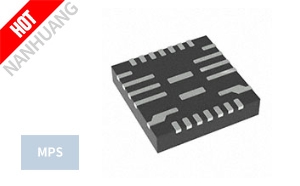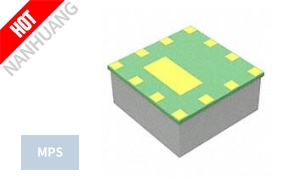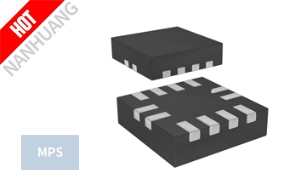
The universe is vast and full of wonder. Explorations of suns and satellites, dwarf planets and comets, and deep-space phenomena render a growing trove of images every bit as captivating as a painting by a great master or a cat video on YouTube.
We’ve selected some of the more spectacular images of celestial objects made public in the last year or so, produced by a variety of observatories, telescopes, and probes operated by numerous organizations, both public and private, around the world.
Jupiter is gigantic enough that astronomers have been able to make out surface features since the late 1600s, just decades after the first development of telescopes. The Great Red Spot has been an object of fascination ever since. In July, NASA’s Juno probe got closer than we’ve ever been — 8,600 miles — and took this shot.
Just in November, scientists from NASA’s Jet Propulsion Lab published a paper explaining why the Red Spot is red rather than some other color. The answer has to do with the combination of chemicals involved, the temperature on Jupiter, and the intensity of radiation.
“When Worlds Collide” imagined the devastation should one planet crash into one other. That’s insignificant compared to the violence of two entire galaxies slamming into each other, a phenomenon captured in this composite photo combining data from NASA’s Chandra observatory (the pink), the NuStar orbital X-ray telescope (the purple), and visible light imagery from the Hubble Space Telescope.
Since the merger process has been ongoing for a few million years, the combination gets one name: Arp 299. Prominent in this photo are 25 notably bright X-ray sources in Arp 299, 14 of them officially labeled ultra-luminous X-ray sources (ULXs). These are probably double stars, where one is a black hole or a neutron star sucking the life out of the star with which it’s paired. This is happening about 140 million light-years from here.
One of Saturn’s 53 moons, Enceladus, rapidly became one of the most intriguing satellites in the solar system because of evidence that it might be one of the very few nearby bodies with liquid water, along with Jovian moon Europa (there are dozens of solar objects likely to have frozen water). The surface, of frozen ice, has regions of distinct geography including craters, fissures, plains, and geysers, some of which were formed by tectonic forces.
This photo was taken by the Cassini probe in 2016 but released earlier this year, along with a gallery that also includes a lovely shot of the moon framed against one of Saturn’s rings.
Approaching the end of its life, Cassini was crashed into Saturn this year. On its way down, it sent back yet another set of gorgeous photos from the closest we have ever gotten to the surface of that planet. The Cassini project was a joint venture of NASA, the European Space Agency (ESA), and the Italian Space Agency; the project’s Hall of Fame gallery includes some of the most spectacular space imagery ever taken.
Our moon has a barren beauty reminiscent of deserts on Earth, but in a grayscale palette, that makes the gold of the Chang’e 3’s shielding and the yellow and red of the Chinese flag pop out as if someone had just started colorizing a black-and-white photo.
China’s Chang’e 3 landed on the moon in 2013. There were some photos from the mission released at the time; another set of photos became public only last year and were posted by the Planetary Society.
Solar winds can form vast gas bubbles that measure light-years across. This image is of the gaseous turmoil in the W3/W4/W5 complex of molecular clouds, a region in which stars are still being birthed. It was taken by the European Space Agency’s Herschel Space Observatory, an orbital telescope tuned to the far-infrared and sub-millimeter wavelengths. Launched in 2009, Herschel ran out of fuel and shut down in 2013, but scientists are still sifting through the data that it collected, and this image was made public only this year.
Some images appear to be common, even mundane. Though perhaps lacking aesthetic value, and definitely lacking any apparent novelty, they might be considered beautiful for their meaning. What looks like just another shot of a distant galaxy in a field of stars represents the first observation of the rare occurrence of two neutron stars colliding — a kilonova.
This kilonova occurred within the galaxy NGC 4993, which is about 130 million light-years from Earth. The image of the aftermath of the collision was taken by the VIMOS instrument on the European Southern Observatory’s (ESO) Very Large Telescope at the Paranal Observatory in Chile.
In the band of rubble orbiting the sun between Mars and Jupiter that might have been a planet had it only all coalesced, there is a single object large enough to be categorized as a dwarf planet, the rocky sphere Ceres.
NASA put together this animated map that shows the entire pockmarked surface of the dwarf planet as it revolves, next to a duplicate with a colorized heat map, except the measure is not temperature but the strength of the gravitational field, which scientists have been able to evaluate by using instruments on Dawn, as well as by using NASA’s Deep Space Network of radio antennas on Earth to detect the effect of Ceres’ varying gravity on Dawn’s orbit.
Why the interest in the gravity map? Ceres appears as if it might be geologically active. It also appears to have once had an ocean. The gravity data can provide clues to the dwarf planet’s geological structure, which, in turn, would provide clues about whether Ceres has a fossil ocean.
There are endless challenges to colonizing space. Among them is where to live? All of the most attractive off-planet options lack a thick atmosphere that protects against the constant onslaught of damaging radiation. That makes the discovery of a shielded potential habitat a very big deal.
Japan’s Kaguya lunar orbiter was crashed in 2009, but as with other retired instruments that generated scads of data, scientists are still sifting through what Kaguya sent back. This year, they released this image of an opening to a tunnel that might be 30 miles long, the first confirmation of such a structure on the moon. Our story on it here .
The European Space Agency’s (ESA) Rosetta probe took this spectacular image of a plume being emitted from some internal source on the comet Churyumov-Gerasimenko, a roughly dumbbell-shaped object that measures less than 3 miles across its widest parts.
Rosetta not only got this snapshot, but it orbited through the plume, giving its on-board instruments an unexpectedly close view of the ejecta; that data is still being processed. Rosetta landed on the comet in 2016, formally ending its mission; this shot was first released in October.
While many of the images that we’ve seen here could only be produced by an instrument affordable only by those who have not just money but a GDP, earth-bound humans equipped with cameras produce an endless stream of stunning shots.
This one is of the one of the most recognizable constellations visible in the northern hemisphere, as viewed from an ice cave in Switzerland.
All registered trademarks and other trademarks belong to their respective owners. For more details, please visit MPS official site.
- IC OFFLINE SWITCH FLYBACK 8SOIC
- DC DC CONVERTER
- IC REG LIN POS ADJ 300MA 8SOIC
- IC PWR SWITCH 1:2 8SOIC
- IC LED DRIVER
- IC REG STEPDOWN CONV WIT 36V 6A
- IC REG LIN POS ADJ 250MA TSOT23
- IC OFFLINE SWITCH 16SOIC
- DC DC CONVERTER 1.2V
- IC REG BUCK ADJ 200MA 12QFN
- 5V TO 35V, THREE-PHASE, BRUSHLES
- IC REG BUCK ADJUSTABLE 4A 12QFN
- MPS opens EMEA headquarters in Bernin
- MPS claims legal victory over Linear
- 13-MP camera kit runs on multiple platforms via USB port
- New products roundup: Digital ICs, IP&E, sensors, and power
- Appetite for sensors grows in industrial applications
- Expanded SiC Schottky diode line from Littelfuse reduces switching losses, increases efficiency and
- The latest and most spectacular photos of space exploration projects
- A solution to voltage change-induced audible noise
- Low-earth orbit constellation satellites powered by Saft Batteries
- TDC1000-TDC7200 is an Ultrasonic Sensing Water Flow/Level/Concentration Evaluation Module
- Monolithic Power Systems Signs Digi-Key to Expand Globally
- MPS announced its launch of two new high-voltage analog switch ICs, the MP4816A and MP4816

















